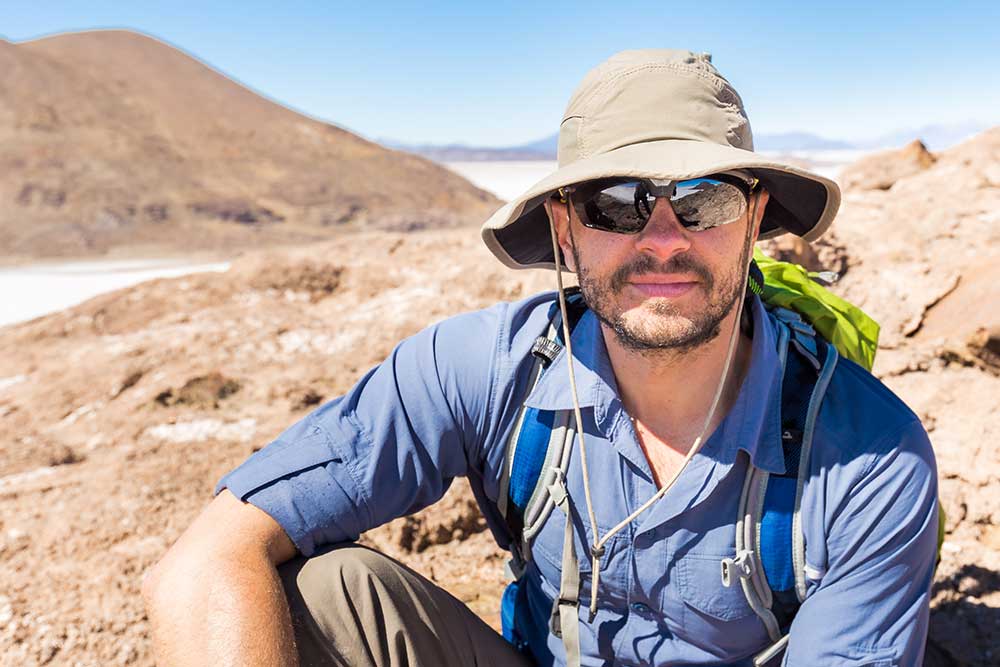All Categories
Featured
Table of Contents
Geology And Geophysics - Careers And Employment in Millendon WA 2023

The main design for the radial structure of the interior of the Earth is the preliminary recommendation Earth design (PREM). Some parts of this model have been upgraded by current findings in mineral physics (see post-perovskite) and supplemented by seismic tomography. The mantle is generally composed of silicates, and the limits between layers of the mantle follow phase transitions.

This makes plate tectonics possible. Schematic of Earth's magnetosphere. The solar wind circulations from delegated right. If a world's electromagnetic field is strong enough, its interaction with the solar wind forms a magnetosphere. Early area probes drawn up the gross measurements of the Earth's magnetic field, which extends about 10 Earth radii towards the Sun.
Inside the magnetosphere, there are relatively thick regions of solar wind particles called the Van Allen radiation belts. Geophysical measurements are typically at a specific time and place.
Geophysics in Koondoola Oz 2022
A three-dimensional position is calculated utilizing messages from four or more noticeable satellites and described the 1980 Geodetic Reference System. An option, optical astronomy, combines astronomical collaborates and the regional gravity vector to get geodetic collaborates. This method just supplies the position in 2 coordinates and is harder to utilize than GPS.
Gravity measurements became part of geodesy due to the fact that they were required to related measurements at the surface of the Earth to the reference coordinate system.
Sea level can also be measured by satellites utilizing radar altimetry, adding to a more precise geoid. In 2002, NASA released the Gravity Healing and Climate Experiment (GRACE), where 2 twin satellites map variations in Earth's gravity field by making measurements of the distance between the 2 satellites utilizing GPS and a microwave varying system. , which are studied through geophysics and space physics.
Surface Geophysical Methods in Madeley WA 2023

Considering that geophysics is concerned with the shape of the Earth, and by extension the mapping of features around and in the planet, geophysical measurements consist of high precision GPS measurements. When the geophysical measurements have been processed and inverted, the interpreted outcomes are plotted using GIS.
Numerous geophysics companies have created in-house geophysics programs that pre-date Arc, GIS and Geo, Soft in order to fulfill the visualization requirements of a geophysical dataset. Exploration geophysics is used geophysics that typically uses remote noticing platforms such as; satellites, aircraft, ships, boats, rovers, drones, borehole picking up devices, and seismic receivers.
For example, aeromagnetic data (aircraft gathered magnetic information) collected utilizing conventional fixed-wing aircraft platforms must be corrected for electromagnetic eddy currents that are developed as the airplane moves through Earth's electromagnetic field. There are also corrections associated with modifications in measured possible field strength as the Earth turns, as the Earth orbits the Sun, and as the moon orbits the Earth.
Importance Of Geophysical Surveys — Methods And Uses in Greenmount Australia 2021
Signal processing involves the correction of time-series information for undesirable sound or mistakes presented by the measurement platform, such as aircraft vibrations in gravity data. It also includes the decrease of sources of noise, such as diurnal corrections in magnetic information., meteorology, and physics.
The magnetic compass existed in China back as far as the 4th century BC. It was not up until great steel needles might be created that compasses were utilized for navigation at sea; before that, they might not keep their magnetism long enough to be helpful.
By looking at which of 8 toads had the ball, one could figure out the instructions of the earthquake.'s (1600 ), a report of a series of meticulous experiments in magnetism.
Working As A Geophysicist And Oceanographer In Canada in Coolbellup Aus 2020
In 1687 Isaac Newton published his, which not only laid the foundations for classical mechanics and gravitation Likewise described a variety of geophysical phenomena such as the tides and the precession of the equinox. The first seismometer, an instrument efficient in keeping a constant record of seismic activity, was constructed by James Forbes in 1844. Dietmar; Sdrolias, Maria; Gaina, Carmen; Roest, Walter R. (April 2008). "Age, spreading out rates, and spreading asymmetry of the world's ocean crust". Geochemistry, Geophysics, Geosystems. 9 (4 ): Q04006. Bibcode:2008 GGG ... 9. 4006M. doi:10. 1029/2007GC001743. S2CID 15960331. "Earth's Inconstant Magnetic Field". science@nasa. National Aeronautics and Space Administration. 29 December 2003. Recovered 13 November 2018.
Runcorn, S.K, (editor-in-chief), 1967, International dictionary of geophysics:. Pergamon, Oxford, 2 volumes, 1,728 pp., 730 fig Geophysics, 1970, Encyclopaedia Britannica, Vol. Introduction to seismology (2nd ed.).
Table of Contents
Latest Posts
Geophysical And Geotechnical Assessment in Mount Hawthorn Western Australia 2020
Geophysicist Bob Embley: Ocean Exploration Careers in Alexander Heights Oz 2022
Geophysical Surveys: Definition & Methods in Woodlands Western Australia 2021
More
Latest Posts
Geophysical And Geotechnical Assessment in Mount Hawthorn Western Australia 2020
Geophysicist Bob Embley: Ocean Exploration Careers in Alexander Heights Oz 2022
Geophysical Surveys: Definition & Methods in Woodlands Western Australia 2021